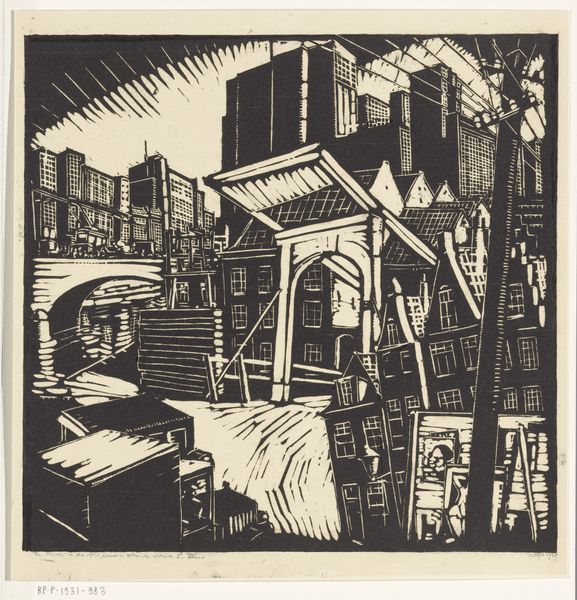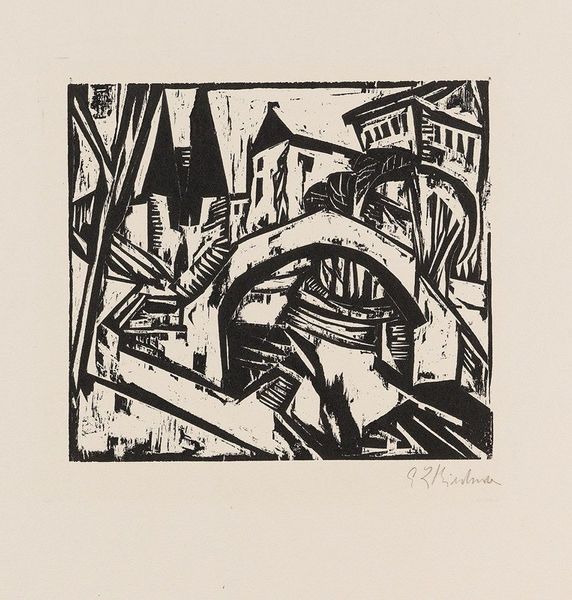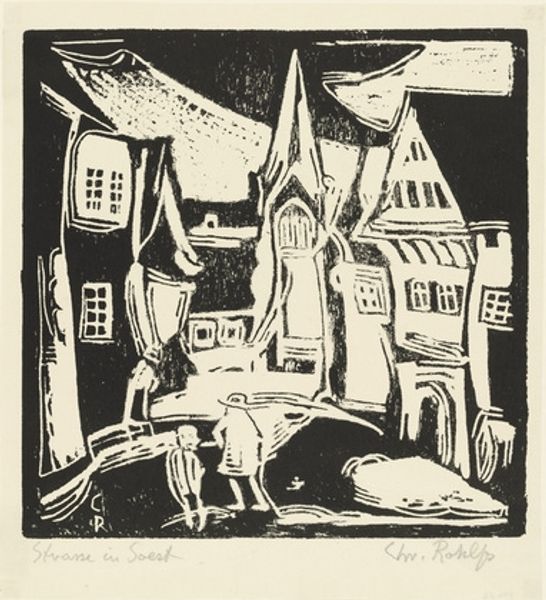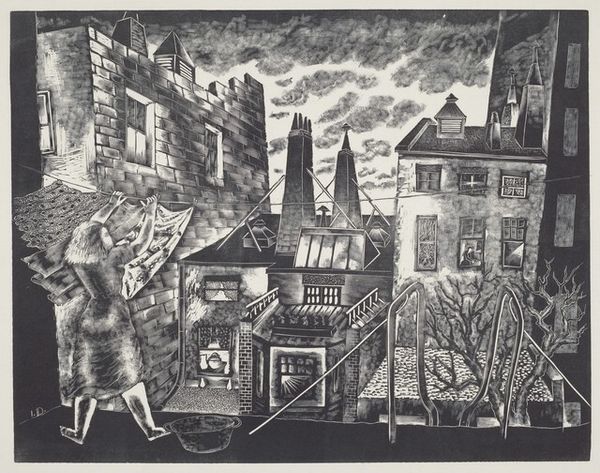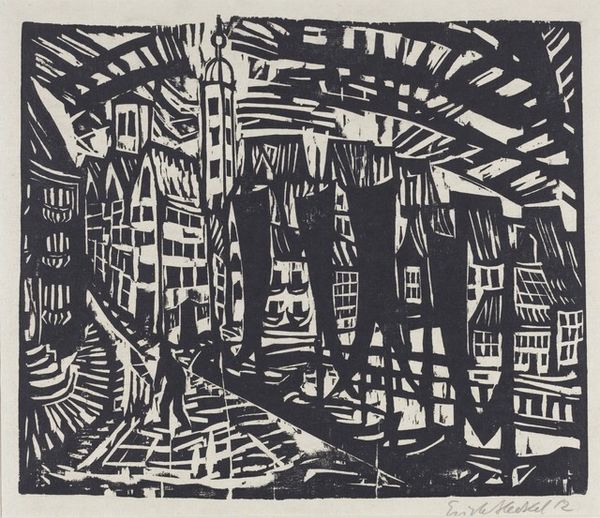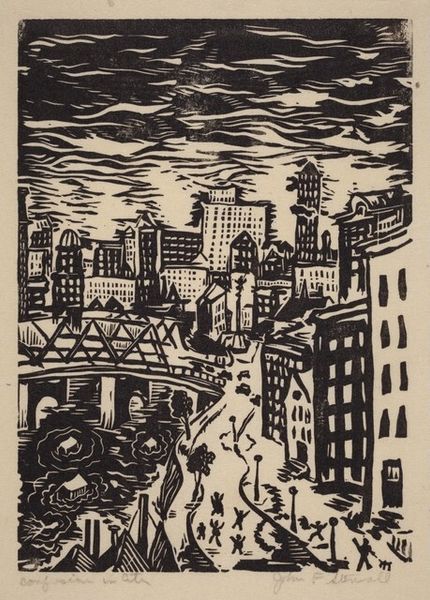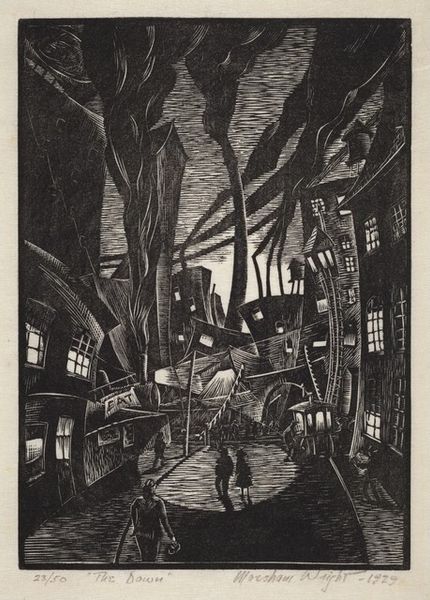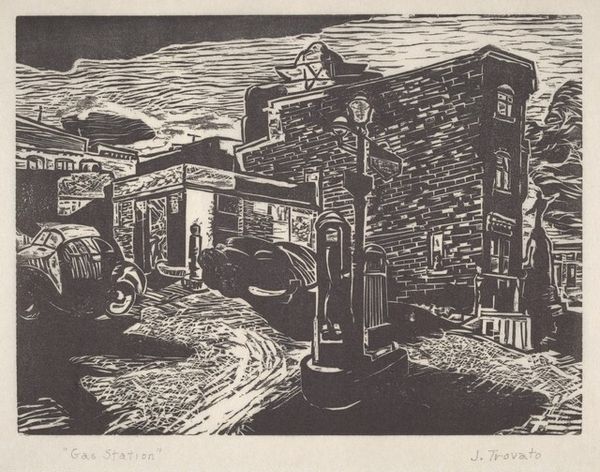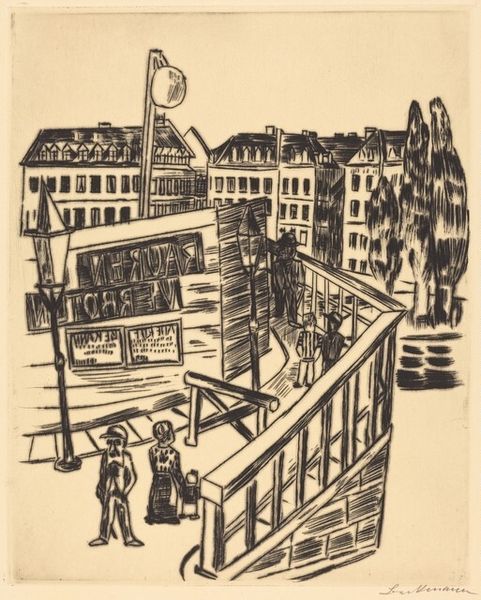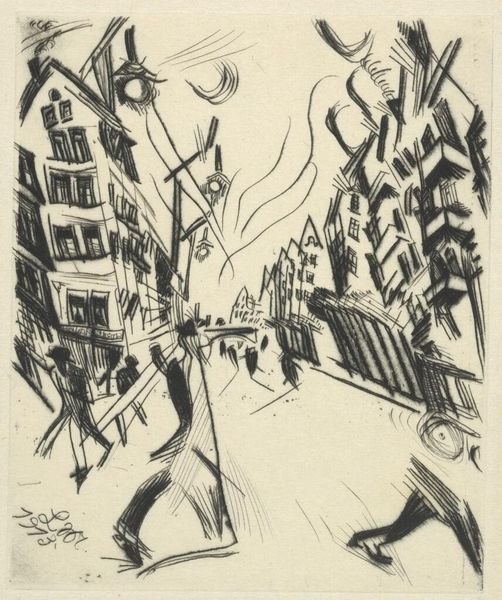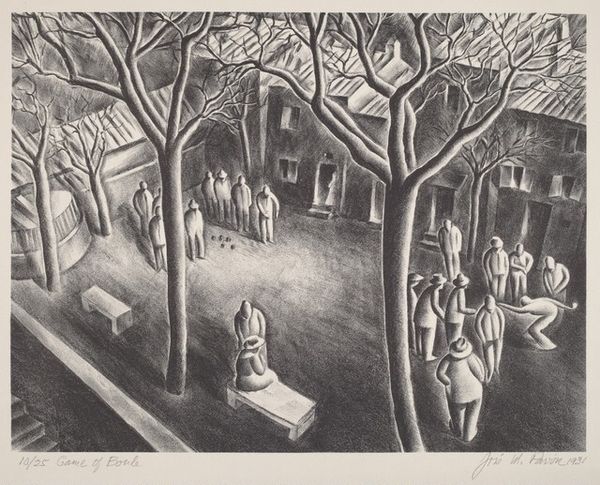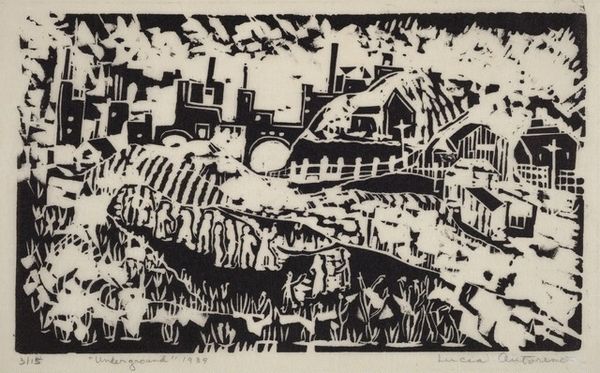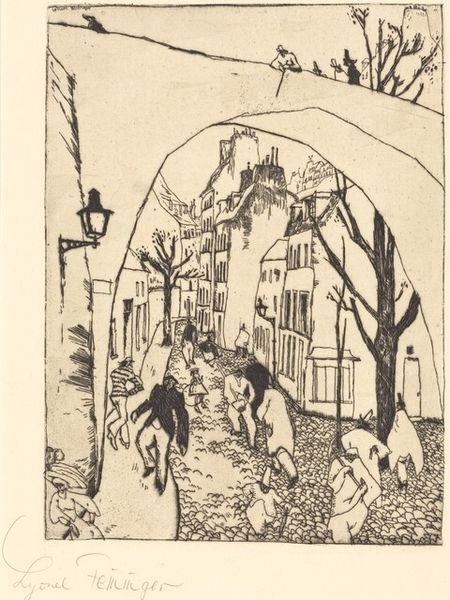
Dimensions: Image: 125 x 135 mm Sheet: 205 x 265 mm
Copyright: National Gallery of Art: CC0 1.0
Curator: What a stark image. The high contrast immediately draws you in, doesn't it? Editor: Absolutely. It's this intense black and white. Looking closely, you see it's a woodcut, titled "Intersection of Three Streets," made in 1929 by Helen West Heller. The graphic quality is almost jarring, a visual representation of urban anxiety. Curator: Anxiety's a great word for it. Considering the era, right before the Depression hit hard, that disquiet definitely resonates. I wonder about her choice of the street corner, that anonymous pedestrian. Is this an exploration of social fragmentation within burgeoning cities? Editor: Precisely, and look at how Heller used the woodcut. That medium wasn't incidental; the rough carving emphasizes the unrefined texture of city life. It isn't romantic. It is the making of labor. The way that printmaking enables accessibility in art also feels poignant here. Were her works part of some leftist circulation? Curator: Heller was indeed very active in left-wing politics; her art often reflected her social concerns. "Intersection of Three Streets," for example, visualizes this notion of alienation that many felt from these urban structures being created that segregated different groups from engaging. She worked for different movements by supplying artworks with very politically driven narratives to them. Editor: And the dog... slinking through. Is this image a commentary on who or what thrives within the societal infrastructure? Curator: Good question. What appears spontaneous probably represents the overlooked people. Think about who this piece would appeal to. In addition, that dog acts like a mirror image of that faceless pedestrian. Editor: The more we discuss this print, the more evident it is the craft and sociopolitical message are entwined. Each deliberate mark carves out her observation of modernity's impact. Curator: Indeed, her use of medium reinforces the artwork’s themes of disconnect and social awareness that she developed as a result of social engagement and discourse within burgeoning leftist circles. Editor: The process and intent have now allowed for such reflection, allowing its narrative and our understanding of that specific historic context, to come to light.
Comments
No comments
Be the first to comment and join the conversation on the ultimate creative platform.
